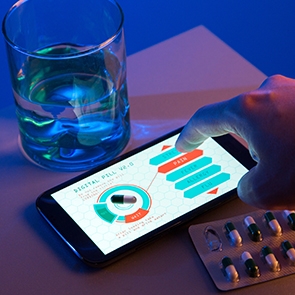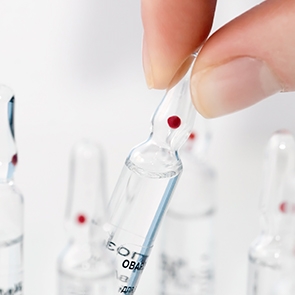Personalised healthcare (PHC), a tailored approach to treatment based on the molecular analysis of genes, proteins and metabolites, has been a hot topic for many years, having been heralded by early successes with drugs like Herceptin for breast cancer (Roche, 1998) and Xalkori for non-small cell lung cancer (Pfizer, 2012). Scientists now have a greater understanding of disease heterogeneity; we know that breast cancer is not one, but many different diseases, and that HER2-positive breast cancer is an aggressive form caused by the overly active HER2 protein in cells.
While oncology is by far the most advanced area of PHC, breakthroughs in other areas, such as immunology, central nervous system, infectious and cardiovascular diseases have also been seen. We believe that PHC is now poised to become a mainstream activity as four big trends converge:
- Advances in genomic science and next-generation gene sequencing, resulting in a better understanding of disease pathways and heterogeneity. We can now identify many genetic mutations and their associated diseases at a much lower cost and with greater speed.
- Increasingly sophisticated diagnostics for screening and risk identification, as well as drug toxicity/safety profiling. Diagnostic tests and biomarker information are key components of PHC, as they are used to identify and predict how well a patient will respond to a particular medication. This enables physicians to determine the best dosage and treatment regimen. Tests can also identify patients who will not benefit from a treatment, thus reducing drug wastage,[1] non-compliance (which leads to adverse health effects, especially for chronic conditions), and healthcare costs. Pharmaceutical companies will be able to identify and eliminate that ‘one in a million’ serious adverse event that can knock an approved product off the market.
- Convergence of digital technology and healthcare, creating greater precision and transparency in modern medicine. Many patients are actively using health apps to measure basic functions such as heart rate and physical activity. Similar technologies have the potential to collect more sophisticated clinical information that could help patients and physicians manage diseases like diabetes or assist pharma in running clinical trials.
- Cost containment pressures within the healthcare system, forcing regulators and payers to demand that all novel treatments are cost-effective. PHC promises optimized use of resources in healthcare through better compliance and fewer unnecessary treatments/side effects and associated costs.
Implications for life sciences companies
Literature shows that one third of FDA drug approvals in 2013 were already linked to a companion diagnostic approach and ca. 600 industry-sponsored trials with a companion diagnostic element are currently taking place. This is testament to the fact that targeted drugs can, in theory, command premium prices through superior clinical outcomes and a faster time to market.
However, PHC has significant implications for the pharma business model; while new drug stratification regimes will reduce the market size of some drugs, biomarker testing will identify new patients for other drugs (e.g. gefitinib was originally prescribed for non-small cell lung cancer, but has now been shown to be effective against many cancers). This approach has the potential to improve sales and profits through a new business model, yielding differentiated products for segmented populations.
Key challenges in personalised medicine
Not surprisingly, this new model presents challenges for the traditional pharma model, both commercially and in R&D. R&D teams must now:
- Understand disease pathways for complex conditions such as cancer and dementia;
- Identify the correct patient cohort, obtaining the right tissue samples and accurately monitoring these samples throughout the clinical trial duration; and
- Understand how to use advanced analytics for data analysis so that population-wide disease patterns and trends can be determined and utilized in personalised treatments.
Commercially, teams have to:
- Understand the regulatory and reimbursement environment, which is complex, poorly defined for drugs versus diagnostics, and lacking in standardization across geographies; and
- Educate physicians on new technologies, approaches and therapies to adopt and remain abreast of these as they continue to advance.
Harnessing potential
Many are already taking significant steps to address these challenges and harness the potential of PHC.
Diuretics, a UK-based research firm, analysed the PHC efforts of numerous pharmaceutical companies to determine which ones are best positioned for the new biomarker-driven world. It is evident that the industry is very active in this area, but it is less clear who will succeed in the long term.
FiercePharmaMarketing [1] reported the results of Diuretics’ study. The key industry players and their latest achievements are summarized below:
Roche has been very active in developing medicines specifically for the patient subgroup with a high amount of HER2. Their treatments target HER2, kill these cancer cells and decrease the risk of recurrence. Roche has the advantages of an integrated diagnostics division and a strong pipeline; approximately 60% of their late-stage compounds are being co-developed with a companion diagnostic test to help personalise treatment. In 2015, Roche acquired a majority stake in Cambridge, MA-based Foundation Medicine (FMI), which provides genomic analysis to pair cancer patients with appropriate treatments and trials.
Novartis has a molecular diagnostics unit integrated within the Novartis Pharma Division, which focuses on innovative companion diagnostics and biomarker tests. So, while many international pharmaceutical companies are working to bring companion diagnostics to the market alongside targeted therapies, Novartis aspires to be a world leader in molecular diagnostics, which is a key element of PHC.
AstraZeneca (AZ) is now a major contender in this space, despite having started out as a ‘dark horse’. Having successfully fended off Pfizer’s advances, AZ is delivering on its claims of a strong product pipeline. In November 2015, the FDA approved Tagrisso, a new lung cancer treatment, in record time. Tagrisso is aimed at a subset of lung cancer patients whose tumours have spread and developed a treatment-resistant mutation (AZ worked with Roche Diagnostics to develop the test for the mutant genes). This represents a very small but well-defined group of patients, which helped AZ speed up clinical trial completion.
Tagrisso is the second targeted oncology drug launched by AZ with a companion diagnostic in less than one year following the approval of Lynparza for ovarian cancer.
PHC is key to AZ’s turn-around efforts, as many of its blockbusters approach LOE (e.g. Nexium, Crestor). Half of the drugs they expect to launch by 2020 will come from companion diagnostics and 80% of the current drugs in its R&D pipeline are personalised.
AZ recently acquired (for $150 million) Definiens, a German company specializing in tissue-based biomarker tests. AZ does not intend to build a diagnostics business in house to match that of Roche, but will ‘cherry pick’ different ‘best in class’ diagnostic partners for different drugs. Many may be surprised that AZ is so well advanced in this space.
The remaining companies are best described as ‘ followers‘ – they have demonstrated solid work in PHC, but are less prepared for a transformational shift.
Pfizer is focusing on targeted lung cancer treatments for UK patients through its partnership with Cancer Research UK and AZ.
GlaxoSmithKline has partnered with GE Healthcare to improve treatment for metastatic melanoma, the most deadly form of skin cancer. Clarient Diagnostic Services, an affiliate of GE Healthcare, will support diagnostic laboratories to develop a standardized and uniform approach to testing cancer patients. This is very important, as there is currently no standard in diagnostic testing.
Merck secured approval for Keytruda to treat non-small cell lung cancer in October 2015. The drug treats only 20% of the patient population, which is a very small market. However, its cost effectiveness has earned it a huge $12,500/month price tag.
Shire has recently acquired Baxalta to consolidate its position in the orphan drugs market across multiple therapeutic segments, including gastroenterology. Orphan drug clinical trials are now adopting genetic biomarkers and clinical endpoints, which is a major step towards PHC.[2]
PHC is a rapidly evolving space. In forthcoming articles, we will look more closely at the clinical and commercial challenges and debate and discuss the potential solutions facing the various stakeholders.
For more information on how to harness the benefits of PHC at your organisation, contact us at a-connect.
Reference:
[1] FiercePharmaMarketing, November 26, 2014, “Who are the stars of personalised medicine?”
Footnotes:
[1] Many of today’s available drugs are effective in only 30–60% of treated individuals.
[2] The orphan drugs market is very attractive, being worth $100+ billion and having a CAGR of 12%, which is almost twice that of the general drugs market. Of the top 10 projected best-selling drugs worldwide in 2015, almost seven had orphan status. The regulatory environment is more favourable and 2014 was a record year for FDA/EU/Japan orphan designations.





